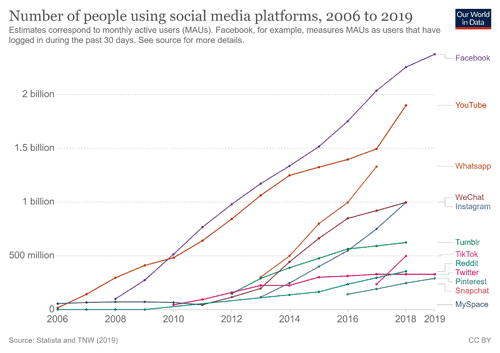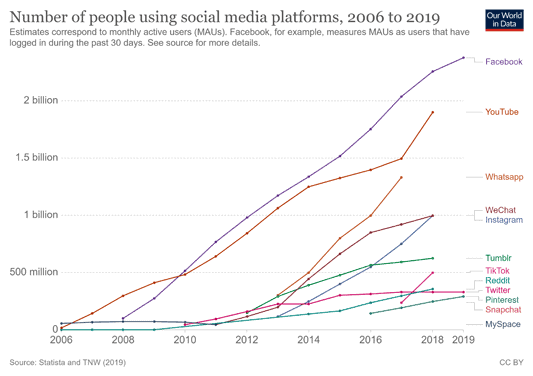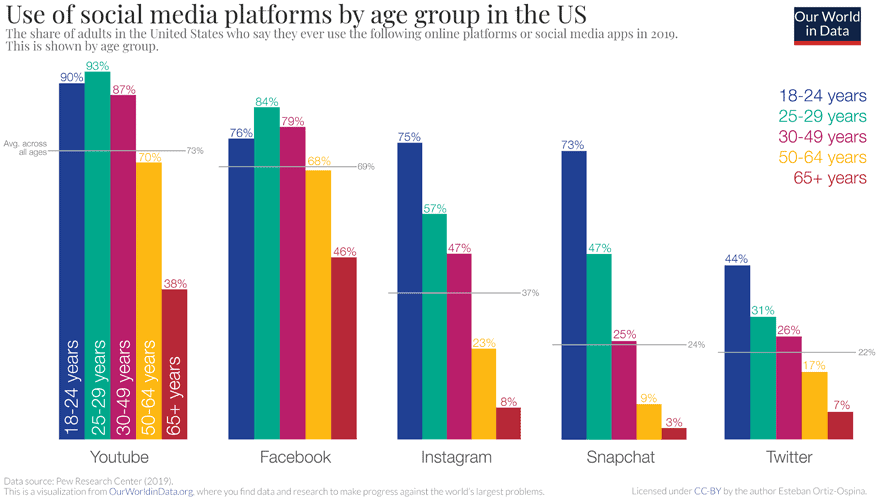Social Media Marketing
Get a following to engage with your audience on a social level
Use the Advantages of Social Media to Build Trust With Customers
At Terzetto Digital, relationships with our customers is a cornerstone of our success. You can Get Social with your customers too using our social media packages within each integrated digital marketing plan.
Just another way that we are committed to working with you to achieve success and to help you Harmonize Your Digital Marketing℠.

What is Social Media Marketing?
In the purest sense, social media platforms are meant to connect people together. This interconnection could be something very specific, such as a hobby, family, or friends, to something generic as blog articles, discussion posts, or videos. These are essentially communities of like-minded users who want to share information on a topic or engage in conversation with other users. Humans are inherently social, and the Internet allows this new way of communication to exist across the world in a way that no other technology has before. There is no end to what you can discover with all the social media content that exists, whether you are connecting with friends on Facebook or searching for a new job on LinkedIn.
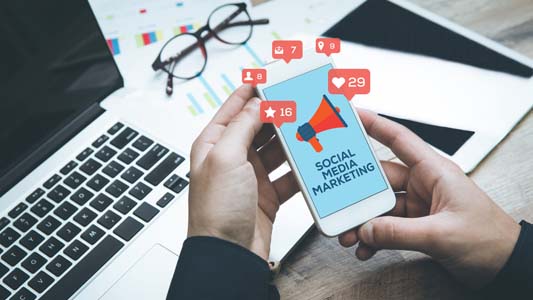
The “marketing” portion of social media marketing was not even considered in the early days of these platforms. All social media sites were free for users to post text, images, videos and generally view or comment on any of the content. This allowed for a more authentic and varied user base without any financial barrier for entry. But as many of the first social media platforms discovered the hard way, they needed a way to generate revenue to pay for adding new features or risk losing users to other platforms.
While there were efforts to start social media platforms before the 2000’s, most failed because the Internet was still in it’s infancy. In 2001, Friendster started with some basic online networking and email address registration. In 2003, Myspace launched and would soon become the most visited website on the Internet. But by 2010, both early startups had been eclipsed by Facebook, YouTube, and Twitter in terms of monthly active users (MAUs). The success of these later startups was enhanced by the creation of the iPhone in 2007, leading them to develop Smartphone Apps for their platforms, as well as to survive by monetizing the platforms through selling social media ads.
With the advent of the “marketing” portion of social media marketing, it not only created revenue for the platforms, but it also provided a way for a business to connect with their target market. Today, each social media platform has a specific audience that allows digital advertising to thrive, and the social media campaign is now a common advertising strategy with Facebook sponsored ads, Instagram ads, and Pinterest ads.
Where Would Social Media Marketing be Used?
The goal of any small business website should be to bring awareness of your products or services to your ideal audience, and from there to convert them into a lifetime customer. While there are many website marketing tactics to accomplish this, the advantages of social media marketing are that you can more easily create a relationship with those prospects. As they spend time on their chosen social media platform, you can share your social media content by posting text, images, or video that they can engage in with a Like, Tweet, Follow, Share, or Comment. They can choose to get to know your company and its products or services at their own pace, eventually visiting your website content or researching your online reputation. By the time they make a purchase, they will know you values, trust in your authenticity, and be more likely to recommend you to a friend based on your social media presence.

Deciding on which of the many social media sites that you should focus on will depend on your digital marketing strategy. Some platforms are better for local advertising or video marketing, whereas others highlight product photography or ecommerce marketing. For these reasons, you’ll want to include social media demographics, such as age and gender, to your persona development. This will greatly improve your social media content creation so that it resonates with your target market, making your day-to-day social media management easier. For example, more than twice as many women use Pinterest as compared to men, so if your target is male, you may not have the best results on Pinterest. There is even more clarity once you include age as a factor, say on Instagram where usage is only slightly higher with females, but if your target is males aged 50-64, only 23% use the platform compared to 75% for ages 18-24.
The key to a successful social media strategy is social engagement. If you spend the time on great content creation and then place it on the online platforms where your audience hangs out, you’ll get results. The downside to the monetization of the social media platforms is that organic reach has declined significantly. In the early days, you could post something, and it would be seen by thousands of people, but now, it may only be seen by a handful. Much like the various search engines converted to paid search, so to have social media platforms, requiring paid social media ads to increase reach. That said, there is still a unique aspect to the social media algorithms where you can get more exposure for free if other users on the platform are engaging with your social media content through sharing or commenting.

When Would Social Media Marketing be Used?
During all stages of the customer journey, there are opportunities to use social media marketing to advance prospects from awareness of your brand to conversion into a customer. The benefits of social media are the connections you can form with customers, both before, during, and after the sale. These relationships yield better conversion optimization gained through your social media conversations, which in turn leads to more trust and loyalty when combined with other digital marketing techniques. For example, your social media customers are more likely to direct message your business from within a social media app. From that interaction, you can start using messenger marketing to further that bond via Live Chat or SMS (text) marketing.

Here are some other great combinations to integrate your social media marketing with your overall digital marketing plan:
- Local Marketing – what’s more social than seeing people in person! If your products or services are only for a local audience, then you can use social media marketing to promote them:
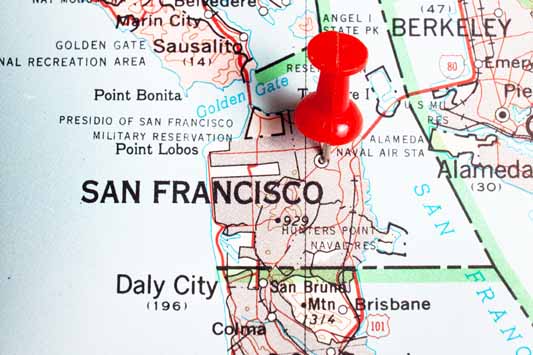
- Event Listings – many platforms support posting dates and times of your local event within the app. This can easily bring in additional foot traffic that your small business website might not attract.
- Contests –people love to win and providing this incentive may get them to give you their email address. The prize is a small price to pay for this valuable information, which provides an opportunity to increase your revenue through email marketing.
- Flash Sales – who doesn’t love a discount! Offering a limited time sale is a great way to liquidate inventory or invite new prospects to visit your local store. The trick is to make this unexpected and fast to create that fear of missing out (FOMO).
- Social Commerce – While you might think that you can only sell products or services online with an ecommerce website, today’s social media platforms offer some unique advantages to selling online:

- It’s more natural – think of how someone might be scrolling through a social media feed, then click on a post of interest. They discover that the post solved a problem they have, and best of all, they can buy the solution instantly.
- It opens a new audience – maybe you’ve struggled getting your website to rank in Google through search engine marketing, but buyers on social media are more likely to share your product or services with friends, family, or business associates.
- It’s free – there is no cost to start selling on a social media platform, although you will typically already have to have an ecommerce website that lists your products. Some platforms do offer direct checkout via their app if your business qualifies.
- Email Marketing Campaign – many people may think that email is no longer a viable medium, but when you combine it with the power of social media, you create an unstoppable duo:

- Open rates increase – there can be suspicion around opening emails from a brand you’ve never heard of. But having that social media connection provides the trust so that more people will open emails from brands they recognize from their feed.
- Opportunity to get website traffic – if someone is already following you on social media, your email marketing strategy should shift to linking them to resources on your website that they may not have seen before. Setting up the various tracking pixels from these social sites can greatly enhance your ability to see how well this is working.
- Sharing is the culture – how often do you forward an email to a friend? Probably not much, but the mindset of your social media prospects is to share. That’s what makes social media work, so they are more apt to share your email newsletter.
- Hashtag Targeting – these single keywords or phrases with no spaces and starting with a hashtag (#) or pound sign, help to group similar concepts together, making it easier to find topics of interest:

- Think like your customers – you are too close to your own industry and may be tempted to use hashtags that are more advanced or technical. Think in terms of the problems your customers have and how you solve them to come up with good hashtags.
- Make your own hashtags – they are free and unregulated, so merely create your own around your brand concepts to make it easy for people to find. You’ll find posts we put on Facebook using our “Harmonize Your Digital Marketing” tagline as a hashtag (#harmonizeyourdigitalmarketing).
- Beware your competition – you should always review the hashtags that you want to use in advance of any postings to verify that the content is appropriate for your audience. The last thing you want to do is lead your prospect directly to your competitors.
Who is Social Media Marketing For?
Businesses of all sizes can use the benefits of social media to grow. You may think that only large brands can succeed on the social media platforms, but that is far from the truth. Whether you are a business that caters to consumers (B2C) or one that sells to other businesses (B2B), each can find new customers through the power of being social. That said, these platforms require a bit more finesse than other digital advertising tactics due to their personal nature. It’s not okay to just sell, sell, sell on social media, rather you need to provide helpful information while being authentic and personable at the same time.
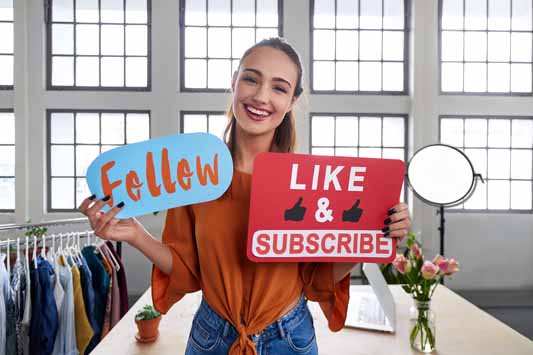
Here are some great ways that your business can use the advantages of social media marketing:
- Humanize your business – showing yourself as the business owner or your employees doing activities helps to make you more relatable. There are times when stock photography can work, but make sure you also include authentic pictures of people that work for you to make it real:

- Show your employees – whether it’s in meetings or at events, this can not only give them something to share, but it helps customers relate as they make recognize some of the people that have helped them before.
- Behind the scenes – we all feel special when we get a glimpse of really happens behind the scenes, so why not show off how you make your products, how they are shipped, or what it takes to perform your services.
- Success stories – seeing how others benefit from your products or services is a great way to encourage more sales through social proof.
- Video marketing works – as both smartphones and Internet connections have improved, video has proven to be a winning media in the world of social media:
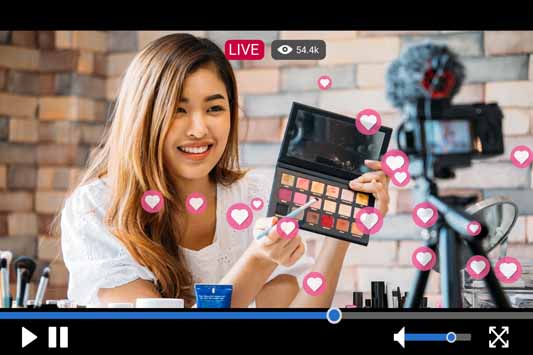
- Movement catches attention – in the busy social feed, you only have milliseconds to stop that scrolling finger, so make sure you post videos that are eye catching.
- Short videos work – it’s great to make long-form videos for YouTube, but don’t forget that short videos work well on social media platforms such as TicTok, where you can create a very simple video that runs from 1 – 3 minutes.
- Livestream now – posting pre-made videos will work but engaging in a Live Stream lends itself to more excitement as people know they are watching it live and will be more engaged.
- Customer service at hand – answering customers questions and dealing with issues through direct messaging is both private and secure, allowing you to help customers much faster:
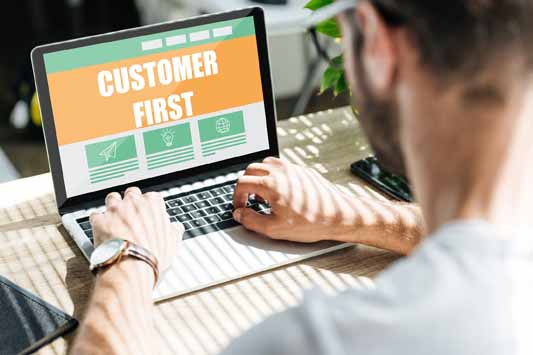
- Information for the masses – if you need to update many customers on your store closing early or if there is a problem with a product, often posting to social media is the best way to get that information out quickly.
- One-on-One support – some customers prefer not to call or email, so using direct messaging is a great way to resolve issues for them using the method that works best for them. Just make sure that you staff someone to be available to respond in a timely manner to maintain your response reputation.
- Online reviews – social media reviews have become another channel that shows up in the local search results for prospects to consider. Make sure that you are using some form of reputation management software to keep up to date on all of your reviews.
How Much Does Social Media Marketing Cost?
Whether you choose to go it alone or outsource your social media management, you can control the cost of social media marketing by having a well-planned social media strategy. While it’s great to be spontaneous and post whenever you have something to say or show, without a plan you may find yourself forgetting to post, or worst of all, feeling stressed that you need to post but don’t know what to say or show. Approaching social media as if it was a magazine that requires an editorial calendar and months of pre-planning can go a long way to reducing production cost and stress while increasing brand awareness and engagement.
You should be realistic about costs. Just because you can open a social media account and post for free doesn’t mean there are no costs involved. Some of the intangible costs to consider are:
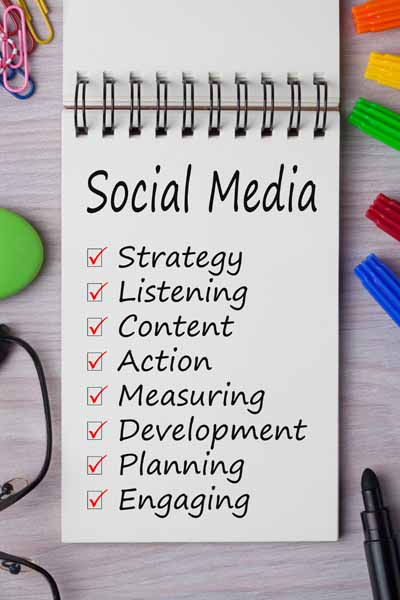
- Your time – as an entrepreneur or the employee in charge of social media posting, you should calculate how much time you are spending on social media marketing. This can be turned into actual dollars if you consider lost opportunity cost (what else could you achieve in this time) or if you multiply the time by your hourly rate.
- Licensing fees – at some point your social media content will need images or video. If you don’t have the skill to create your own, or the time to search for that perfect free image, you’ll need to pay for a royalty-free license. This will get you access to thousands of high-quality images and videos while providing legal protection from copyright infringement.
- Marketing analytics – each social media platform has large amounts of data that can help you determine how well or how poorly you are doing with your social media marketing. This is free, but again, your time to login to each platform and analyze this data should be considered. Alternatively, many digital analytics companies can consolidate this data for a monthly fee.

Should you decide to outsource to a digital marketing agency, it’ll be easier to define the cost for social media marketing and budget for it accordingly every month:
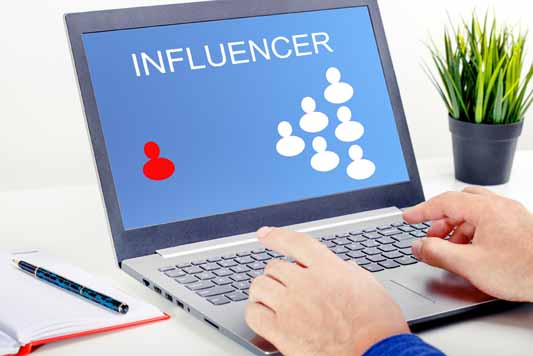
- Social Media Content – a bundled approach with social media packages that include strategic planning, competitor analysis, content writing services, graphic design services, marketing videos, and an analytics dashboard.
- Social Media Ads – leveraging your advertising strategy to take advantage of the user data available on each social media platform. Tailor ads to you target market using the power of Facebook Retargeting or find new prospects with Facebook Custom Audiences combined with both Facebook Sponsored Ads and Instagram Ads.
- Influencer Marketing –finding the right person to promote your brand on social media can have a major impact on your products or services. That said, it can be very expensive to hire an influencer without any guarantee that it will increase your sales. You may want to send free product samples to various individuals to get feedback before negotiating any payment arrangements.
Are You Ready to Get Social With Customers on Their Favorite Social Media Platforms?
All Digital Marketing Plan Levels Include Social Media Marketing

You'll Get Social With These Featured Services

Social Media Profile Optimization
| Starter Plan | Growth Plan | Pro Plan |
|---|---|---|
Update or create the Social Media Profiles (Facebook, Twitter, Instagram, Pinterest, YouTube, or LinkedIn) based on your target market. Includes copywriting about your company, cover art creation, and uploading your logo to each platform.

Social Media Profiles Allowed
| Starter Plan | Growth Plan | Pro Plan |
|---|---|---|
| 1 | 2 | 4 |
While we support Facebook, Twitter, Instagram, Pinterest, YouTube, and LinkedIn, we will only optimize/post to the number of profiles available in the specific plan.

Social Media Unique Posts
| Starter Plan | Growth Plan | Pro Plan |
|---|---|---|
| 6 | 12 | 18 |
Creation of unique, branded posts each month to each profile, with reposting of same content on different days/times to maximize feed reach.

Social Media Curated Posts
| Starter Plan | Growth Plan | Pro Plan |
|---|---|---|
| 2 | 4 | 6 |
We’ll research various industry websites and social media profiles to post or repost relevant articles from third parties on topics that may interest your followers.

Blog Posted to Social Media
| Starter Plan | Growth Plan | Pro Plan |
|---|---|---|
| 1 | 2 | 3 |
We’ll repost the blog posts that were written for the website to your social profiles to capture the target market as they browse their social feeds

Social Media Audit
| Starter Plan | Growth Plan | Pro Plan |
|---|---|---|
Get expert, in-depth analysis of your Facebook and Twitter profiles. From how engagement varies with images, links, and hashtags, to mentions and the best times to post.



